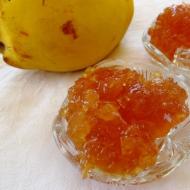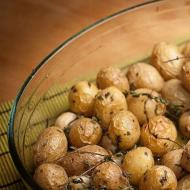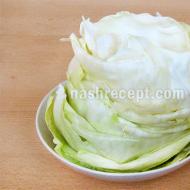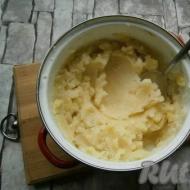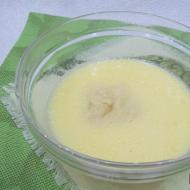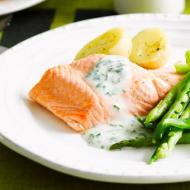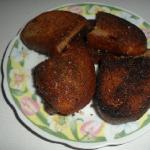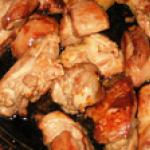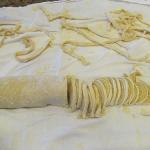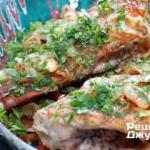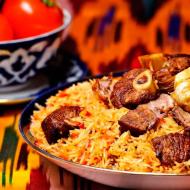
Pilaf of the peoples of the world: what is the difference. Pilaf: history of origin and recipes for pilaf What is pilaf called in Uzbek
As a result of many years of collecting material on Uzbek cooking, it was possible to establish that there are dozens of options for preparing Uzbek pilaf. Some forgotten cooking methods were restored and some newly created recipes were included in the list. Conversations with old-timers and hereditary masters of national cuisine from various cities and villages of Uzbekistan helped with this.
Written sources about the varieties of pilaf have not yet been found. However, according to oral reports from our interlocutors, the assortment of this honorable dish exceeds a hundred. Each region of ancient rice cultivation, each city had its own methods of preparation, unique only to this area, each cook had his own secrets in the recipe and technology. Thirty-five years of persistent searches made it possible to identify 60 varieties of pilaf. Another difficult task arose - to classify these varieties and develop a classification methodology.
Some cooks believe that it is not worth elevating each variety to the rank of an independent dish. At the same time, they proceed only from the fact that the products in each version of pilaf are the same: rice, meat, butter, carrots, onions, that they are fried, boiled, stewed and steamed in the same way.
However, it should be noted that the scientific and hygienic foundations of rational nutrition at the current stage of development dictate to us the need not to reduce, but, on the contrary, to increase the range of dishes accepted by the population, to increase the diversity of the diet. Therefore, determining the boundaries between varieties of pilaf meets the requirements of science. This is important not only for cooking, but also for ethnography, a science that studies the material and spiritual culture of the people.
In addition, the classification will help preserve each variant of pilaf from distortion. The fact is that young pilaf cooks, culinary enthusiasts, and even specialist chefs know firsthand that there are many varieties of pilaf, that it is prepared not only from rice with meat and carrots, but also with their substitutes or with the addition of additives to the main products, etc. .d.
But these pilaf makers, due to ignorance of the exact recipe, and sometimes technology, in practice distort them, combining two, three, four varieties into one. But in fact, each replacement of the main product or each addition of an auxiliary one is a new recipe and, accordingly, a new method of preparation. Consequently, any change leading to a difference in recipe, technology, appearance, taste and aroma usually leads to the emergence of a new independent dish.
When classifying the varieties of Uzbek pilaf, the following must be taken into account: firstly, the replacement of main products (meat, rice, carrots) with others, secondly, the addition of eggs, legumes, vegetables, fruits and berries to the pilaf and, thirdly, division into pilafs special and wedding ones, prepared using a different technology than the main ones.
However, any pilaf is prepared from two components: meat, fish or other dressing (in the Central Asian version “zirvak” or in the Iranian “gara”), and rice, or, much less often, other cereals - wheat, peas, corn, mung bean. In fact, pilaf is somewhat reminiscent of meat rice porridge; the first Russian explanatory dictionaries defined it that way. However, the main difference between pilaf and porridge is that the grain for pilaf is not boiled, but stewed. Cooking pilaf- real art. It is very important to choose the right rice for pilaf - it should not be overcooked, the grains should be easily separated from each other. There are two main options how to cook pilaf, or two main technologies for preparing pilaf - Uzbek and Azerbaijani.
Pilaf, recipe which involves the joint preparation of zirvak and cereals, is called Central Asian or Uzbek. The only exception is Samarkand pilaf, which is prepared using Azerbaijani technology. Various pilaf recipes arise due to the choice and combination of zirvak, grain, vegetables, spices, the sequence of laying and the duration of processing of products, specified in the pilaf recipe. As you know, in Asia they usually cook lamb pilaf. The rice for preparing pilaf using Central Asian technology must be special - this is red Uzgen rice or “devzira”. Only yellow carrots are considered an obligatory vegetable. Spices usually include cumin, red pepper, barberry, garlic, as well as dried apricots, quince and raisins. For Uzbek pilaf Pre-calcination of the oil is very important. Traditionally, a mixture of vegetable (usually cottonseed, less often sunflower, sesame) oil and animal fat (lamb, goat) is used. Uzbek pilaf is prepared exclusively in a large thick-walled cast iron, aluminum or copper cauldron, over an open fire and on the street, because even a very good hood is difficult to cope with the consequences of calcining the oil.
In the Azerbaijani (Iranian or Turkish) version of pilaf, the dressing, “gara”, and cereals are prepared separately and combined only on a common dish or even on a plate. Gara can be meat, fish, egg, vegetable. Almost all recipes for Azerbaijani pilaf use fruits - cherry plum, pomegranate, apricot, etc. For example, chicken pilaf Persian style is prepared exclusively with pomegranate juice. Rice for pilaf is always boiled with butter - butter or melted butter. Unlike Uzbek pilaf, Azerbaijani pilaf is served not hot, but slightly warm, but with not yet solidified butter.
Here we should remember the Turkish proverb “As many Muslim cities exist in the world, there are as many recipes for pilaf in the world,” and make a reservation that in different countries you can find a lot of variations that combine both methods of preparing pilaf. At the same time, today the most common version of pilaf is still Uzbek pilaf. By combining rice and meat with vegetables and spices in a cauldron, they prepare pork pilaf(which is basically impossible in Muslim countries), pilaf with chicken, beef pilaf– products that are not popular in Central Asia. Has an original taste sweet pilaf Indian style with dried fruits. In general, choose a pilaf recipe, prepare this wonderful dish and let it be delicious! How to cook pilaf. Our tips Rice for pilaf. Do not use Indian or Thai varieties of rice - basmati or jasmine. They are too soft, they will boil quickly and turn into porridge. If you can't find scald or scald, use Italian rice intended for paella. Oil for pilaf. Use only refined oil, aromatic oil will muffle the smell of pilaf. Spices for pilaf. Only cumin, hot red pepper and barberry are mandatory. Everything else is up to your taste.
01.08.2017
Pilaf is the most common and favorite food of Uzbeks. It is prepared both on holidays and on weekdays.
The constant components of pilaf are rice, fat (oil), onions and carrots, since pilaf can be prepared without meat. Instead, kazy, hasip, and eggs can be used.
Peas (chickpeas), garlic, quince, raisins, turnips and other products can be added to the constant ingredients. Then the name of the pilaf is supplemented with the name of this product, for example, pilaf with garlic or pilaf with raisins.
For pilaf, low-starchy and whole grains of rice are used.
The suitability of rice for pilaf is determined as follows: when washing it, it is squeezed tightly in a fist; if a lump that does not crumble is formed, such rice is considered unsuitable for pilaf.
Usually pilaf is prepared with fat tail fat. However, as scientific research has shown, frequent consumption of animal fats negatively affects the body, so vegetable oils or their mixtures with animal fats are desirable for pilaf. Previously, zigir and sesame oils were widely used to prepare pilaf, now cottonseed oil.
Which variety of carrots should you prefer for pilaf? It depends on the area and type of pilaf. For example, in Samarkand and Khorezm regions they prefer yellow carrots, in Surkhandarya - red, in other regions both are used.
The process of preparing pilaf consists of two stages: preparation of zirvak and actual cooking. Preparation of zirvak includes heat treatment (together or separately) of onions, carrots and meat, and the actual cooking involves adding rice and evaporating it (with or without a closed lid).
An important component of pilaf is spices and seasonings added when stewing zirvak. Cumin, barberry, anise, ground black and red pepper, and red hot pepper pods are used as spices and seasonings.
About half of the intended amount of salt is placed in the zirvak. If you prepare zirvak without salt, the pilaf will acquire a viscous and watery consistency and will not be crumbly.
An important point when cooking pilaf is determining the completion of the process of absorption of liquid by rice. Use the back of a slotted spoon to lightly hit the rice; If the moisture is completely absorbed into the rice, a dull “gup-gup” sound is produced.
In Uzbek national cuisine, four methods of preparing pilaf have long been known: Fergana, Samarkand, Khorezm and Bukhara. Whatever the cooking method, the rice in the pilaf should be crumbly.
Pilaf is served with various snacks of fresh and sautéed vegetables, pomegranate seeds and finely chopped greens with thinly sliced onions.
Types of pilaf:
Fergana pilaf
The Fergana method of preparing pilaf is the most famous and popular. This is how pilaf is prepared not only in the Fergana Valley, but also in Kashkadarya, Surkhandarya, Tashkent and other regions of the republic. This pilaf has a rich brown color. Hot capsicum gives pilaf its spiciness; it is added to pilaf by the population of the Fergana Valley and Tashkent region.
Fat tail fat, cut into small cubes, is rendered and the cracklings are removed. Bones, onions or pieces of carrots, peeled from meat, are fried in the resulting fat, and the color of the fat becomes brown, improving its taste and aroma.
The onion is cut into rings and fried until golden brown. Then diced meat is added to it and fried for another 15-20 minutes. Then add carrots, cut into strips, and fry together with the meat until its mass is reduced by 40-50%:
The resulting zirvak is poured with a small amount of water, some salt is added, whole pods of hot red pepper, spices are added and boiled after boiling over low heat until the carrots soften. During the cooking process, pepper pods are punctured in several places.
The rice is sorted, washed thoroughly and soaked with salt for 30-40 minutes. Place it in an even layer on the zirvak with a slotted spoon, pour in hot water so that its layer above the rice is 1.5-2 cm, add the rest of the salt and quickly bring to a boil. Maintain high heat until the liquid is completely absorbed by the rice.
Then, using a slotted spoon, collect the pilaf towards the middle of the cauldron, making punctures in several places (with a knife or the handle of a spoon) to allow steam to escape. After this, the cauldron is tightly closed with a lid and the pilaf is brought to readiness over low heat.
Before serving, carefully mix the pilaf and place it on a plate in a heap, with meat and pepper pods placed on top.
Samarkand pilaf
It is often prepared in Samarkand, Bukhara, Urgench and surrounding areas.
When preparing Samarkand-style pilaf, yellow carrots are usually used. Unlike Fergana-style pilaf, rice retains its natural white color; when serving, carrots are not mixed with rice.
Onions, cut into rings, are fried in very hot fat until golden brown, then 200-250 g pieces of meat with bones are added and fried together with the onions until a crispy crust appears on their surface. Place chopped carrots on top of the meat, add a small amount of water, add salt, pepper, cumin, barberry and simmer with the lid closed until the carrots are ready.
The rice is sorted, washed thoroughly and soaked for 30-40 minutes. with the addition of a small amount of salt. Before use, the rice is washed again.
Using a slotted spoon, place rice in an even layer on the finished zirvak, pour in hot water, add salt, quickly bring to a boil and cook over high heat until the liquid is completely absorbed by the rice. Then reduce the heat, close the pot tightly with a lid and cook until the rice is boiled.
When leaving, rice is placed in a heap on the dish, carrots are placed on the rice, and meat cut into small cubes is placed on the carrots.
Khorezm pilaf
This method of preparing pilaf is known only in Khorezm. The meat is cut into large pieces, fried in hot fat along with onions, poured with a small amount of water and allowed to boil. Then carrots, cut into slices 3-4 mm thick, are placed on the meat, salt and spices are added, the cauldron is tightly closed and simmered over very low heat for 8-10 hours until the meat is boiled. After this, add rice, pour water in a layer of 1.5-2 cm above the rice, salt and cook like regular pilaf.
When serving, place rice, carrots and meat in layers.
Khorezm tui pilaf
It is prepared in the Bukhara way and is intended for guests on wedding days.
The sorted and washed rice is boiled until half cooked in salted water, then thrown onto a special flooring (buira) made of reeds to drain the water. Half the rice is colored with saffron. Carrots and onions, cut into strips, are also boiled in a small amount of salted water. The meat is boiled in large pieces until half cooked.
Boiled pieces of meat are placed at the bottom of the cauldron, fat and broth (or water) are added, then carrots and onions are placed in an even layer, lightly boiled yellow sultanas are placed on the carrots, and lastly, 4-5 layers of colored and uncolored rice are placed. The cauldron is tightly closed and simmered over low heat.
When serving, rice is placed in layers, then carrots with sultanas and pieces of meat,
Bukhara pilaf
In the Bukhara method of preparing pilaf, rice, meat products and vegetables are boiled separately. Pilaf prepared in this way is called “safoki”. This cooking method was widespread in Bukhara. The name “Bukhara-style pilaf” is sometimes used to describe a method of preparing Samarkand-style pilaf with raisins, but without meat. This method, with some modifications, is also used in Khorezm to prepare wedding pilaf; such pilaf is called “oshi sufi.”
The sorted and washed rice is boiled in salted water until tender, placed in a sieve and allowed to drain.
Meat in large pieces and whole peeled carrots are boiled together. Then the meat is cut into cubes, the carrots into strips. These products are combined, sprinkled with salt, pepper and mixed.
Onions are fried in very hot fat.
When serving, boiled rice is placed on the dish, and heated oil and onions are poured over it. Place carrots and meat on top and pour over the remaining highly heated oil.
Kazili pilaf
Pilaf with kazy is prepared mainly in Bukhara, Samarkand, Tashkent regions and the Fergana Valley.
Instead of meat, this pilaf uses kazy. Kazy is immersed in cold water and boiled until tender. Then they place it on a zirvak prepared in the Ferghana or Samarkand method, fill it with water, add salt and cook until the carrots are ready. Later it is prepared in the same way as pilaf with meat.
Before serving, the pilaf is placed in a mound and kazy circles are placed on it.
Kovatokli pilaf
Pilaf with cabbage rolls from grape leaves is prepared in all regions of Uzbekistan, with the exception of the Khorezm region.
The young leaves of the grape shoots are cut off with a blade and the rough parts are removed. Fatty meat is passed through a meat grinder, finely chopped onions, salt and pepper are added. The minced meat is wrapped in leaves, like cabbage rolls, and placed in a cauldron, seam side down, on a hot zirvak. Add water to lightly cover the cabbage rolls, salt, add spices and cook over low heat for 45-50 minutes. Then the washed rice is placed on the cabbage rolls in an even layer, filled with water, salt is added and cooked like pilaf with meat. When serving, pilaf is placed in a heap, with cabbage rolls on top.
Nukhatli pilaf
Peas are mainly used in preparing pilaf using the Fergana and Samarkand methods. Pilaf with peas is cooked in all regions of Uzbekistan (with the exception of the Khorezm region), using a local type of pea - chickpeas. An important point is the processing of peas: they are sorted, washed with cold water and soaked for 12-14 hours. During this time, change the water 4-5 times. If you add salt to the water, the peas will boil quickly.
Meat, onions, carrots are cut into small cubes and fried all together.
Place swollen peas in the finished zirvak, add water, add salt and spices and cook over low heat for about 1 hour. When boiling vigorously, the peas do not cook well. Rice is placed in an even layer over the finished peas and cooked like pilaf in Fergana or Samarkand style.
Uzbek national dishes and products. "Shark" 1995.
Pilaf- This is a famous dish that is considered national in many countries of the world. Pilaf got its original name from the Persian word “پلو” or polov, which literally means “cooked rice”. In cooking, pilaf refers to the so-called compound dishes, which are prepared from various ingredients.
However, the basis of pilaf is always rice, which is stewed with the addition of vegetables, as well as meat, seasonings and spices. There are varieties of pilaf that are cooked with fish. Researchers note that the history of pilaf began around the 2nd-3rd century BC. The first to make pilaf were in India, as well as nomadic peoples in the Middle East. Although rice began to be cultivated in China much earlier than in India and the Middle East, methods for preparing pilaf were not known in the Middle Kingdom.
Researchers of world culinary traditions believe that the recipe for pilaf was borrowed by the ancient Persians in India, where for thousands of years people made vegetarian varieties of stewed rice. The Persians began to add meat and poultry to pilaf, thereby coming up with a new version of preparing the dish. Thousands of years ago, Indians began to add turmeric and saffron to pilaf; this tradition has survived to this day.
It is interesting that such a dish as pilaf was initially considered a holiday dish and was served exclusively on special occasions. It is also worth noting that there are references to pilaf in literary sources, for example the famous medieval Arabic work “A Thousand and One Nights”. It was from the eastern states and India that pilaf began its victorious march throughout the world.
Pilaf is especially popular in Central Asia, where chefs have achieved the highest skill in preparing the dish. In the biography of Alexander the Great himself, there are references to pilaf, which the great conqueror and king were treated to in Samarkand, as well as in Persia. In Europe, they first learned about pilaf in the 17th century, but European chefs were unable to taste and prepare the dish correctly.
The result was an ordinary rice porridge with rice, meat and sauce, which was called miroton. Only in the 19th century was pilaf remembered again in Western Europe. This happened thanks to French engineers who participated in the construction of the Suez Canal, connecting the Red and Mediterranean seas. In the East, pilaf is considered the main dish of any celebration.
Therefore, there are simply a huge variety of types of pilaf, for example, wedding, funeral, pilaf for children’s birthdays, and so on. It is worth noting that women prepare pilaf every day in the East and Central Asia. The preparation of the festive version of the dish is entrusted to male chefs who specialize in preparing pilaf and are called ashpazy. It is worth especially emphasizing that in every country that considers this dish a national dish, there are more than a dozen types of pilaf.
In Central Asia and the East, pilaf is prepared differently. True, in any cooking method there are certain characteristic features of the dish. Properly prepared pilaf will have a crumbly consistency. The rice should not stick together like porridge. Therefore, when preparing pilaf, special attention should be paid to the choice of rice.
According to professional chefs, the most suitable type of rice for pilaf is dev-zira or Uzgen rice. As a filling, the following ingredients are added to the pilaf, pre-fried in a mixture of animal fat and vegetable oil: lamb, carrots, onions, as well as barberries, salt, cumin and red pepper.
In addition, garlic is often added to pilaf, with whole and unpeeled heads to enrich the aroma and taste of the finished dish. As mentioned earlier, there are also fish varieties of pilaf, which are prepared using sturgeon meat. In addition to rice, other cereals and legumes can be added to pilaf.
If you liked the information, please click the button

